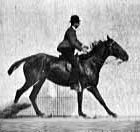Musculoskeletal System Overview - Anatomy & Physiology
|
|
Introduction
The musculoskeletal system includes bones, joints, cartilage, muscles, ligaments and tendons. In order to describe anatomical landmarks for example for the purposes of surgery and to be able to describe different directional information, for example when recording the view of a recently taken x-ray, it is necessary to have a way of describing the planes and axes that can be applied to the musculoskeletal system to pinpoint a specific anatomical area.
The Trunk
The trunk consists of three segments: thorax, abdomen, and pelvis, each of which is bounded by body wall and contains a cavity. The thoracic cavity lies cranial to the diaphragm, whereas the abdominal cavity lies caudal.
Dorsally, the roof of all three cavities is formed by the spinal column and associated muscles. The pelvic cavity is defined by the borders of the bony pelvis and communicates with the abdominal cavity. The bony thorax inlcudes the ribs and sternum; the thoracic musculature is predominantly associated with respiration.
The Head and Neck
Skull and Facial Muscles
Pharynx
Larynx
Syrinx
Hyoid Apparatus
Limbs of the Dog, Horse and Cow
Forelimb
Hindlimb
Phalanges
Topographical anatomy
Test yourself with the Musculoskeletal Flashcards
References
Books
- Dyce, K.M., Sack, W.O. and Wensing, C.J.G. (2002) Textbook of Veterinary Anatomy. 3rd ed. Philadelphia: Saunders.
- O.Charnock Bradley The Structure of the Fowl, 3rd ed, J.B.Lippincott Company, 1950
- Konig and Liebich: Veterinary Anatomy of Domestic Mammals, 3rd Edition
Images
- Royal Veterinary College Histology Department
- Nottingham Veterinary School
